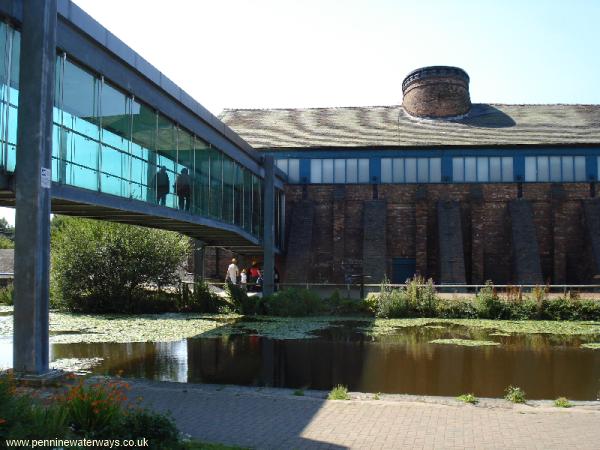
This glass-sided footbridge links the two parts of the World of Glass visitor attraction, near the centre of St Helens. The building incorporates an 1883 glass cone house.
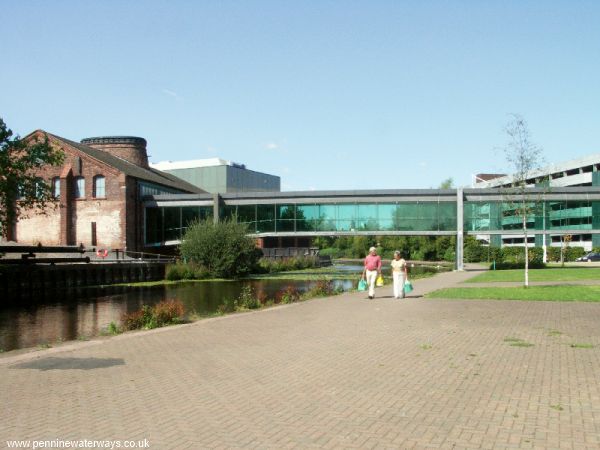
The enclosed footbridge crossing the Sankey Canal between the two parts of the World of Glass museum, St Helens.
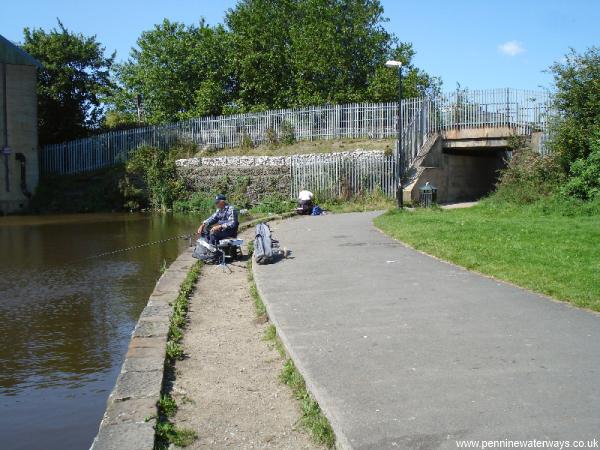
Where the railway from Liverpool crosses the canal, the rail bridge was replaced by an embankment when the bridge became unstable.
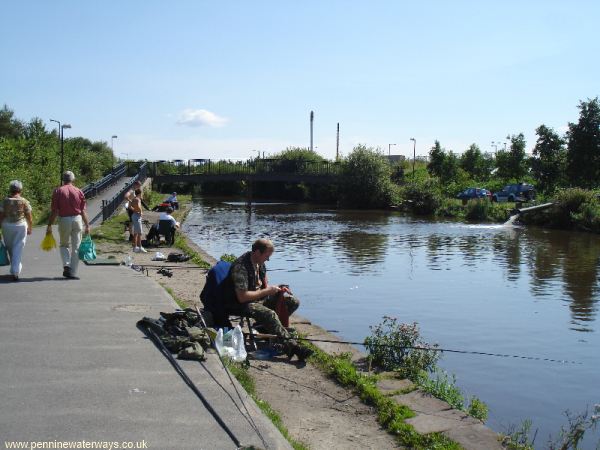
East of the railway, a footbridge crosses the canal, as the towpath route changes to the other bank.
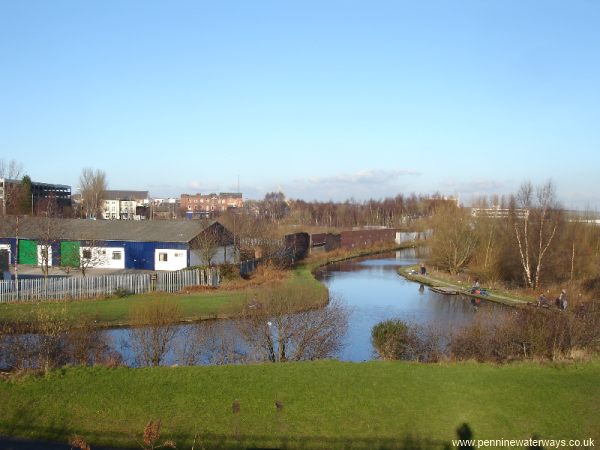
After the footbridge, the canal takes a sharp turn north-eastwards. There was a junction here, with the Sutton Arm running southwards for a short distance to a coal pit. The canal terminated in this area in 1772 after the opening of the Boardmans Bridge Branch, which later came to be regarded as the main line. The Ravenhead branch, which went off to the left of the picture, opened in 1778. (This photo was taken before the construction of another footbridge in the medium distance.)
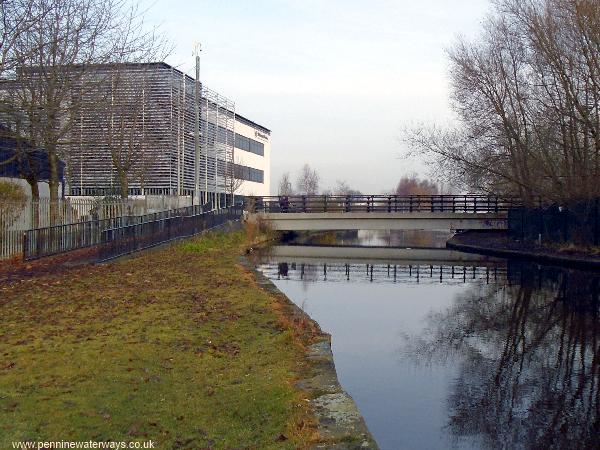
Just north of the sharp turn a new footbridge has been constructed next to the Chamber of Commerce building to give direct pedestrian access from the town centre to the big new Tesco store and the rugby stadium.
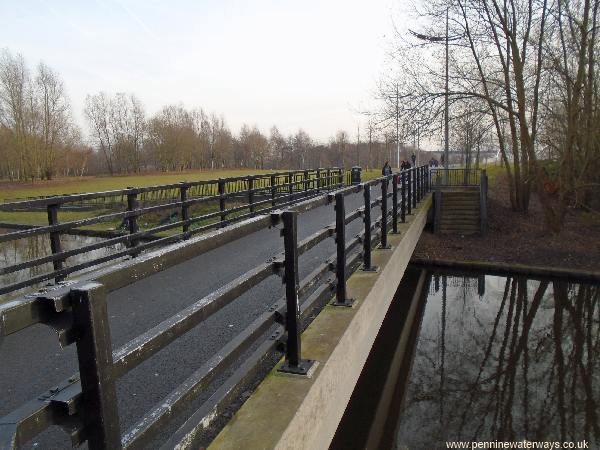
The short-sighted St Helens Council has allowed the new footbridge to be built at a height to prevent future navigation, even thoough there is plenty of room for gentle approach ramps for a raised bridge. There are a great many obstacles to be dealt with before boats will be able to reach the town once again but it makes no sense to create yet another obstacle in order to save a little money.
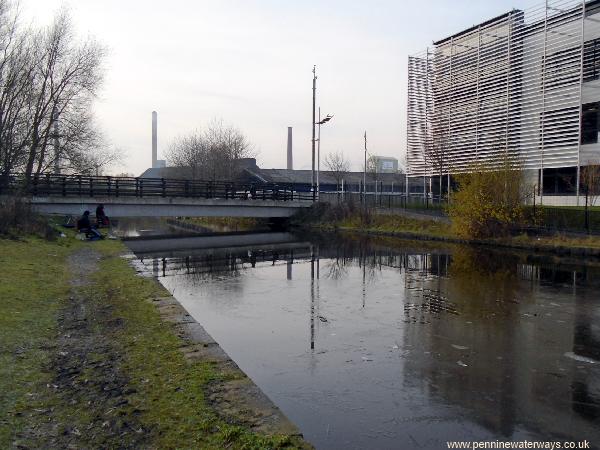
Looking back to the new footbridge.
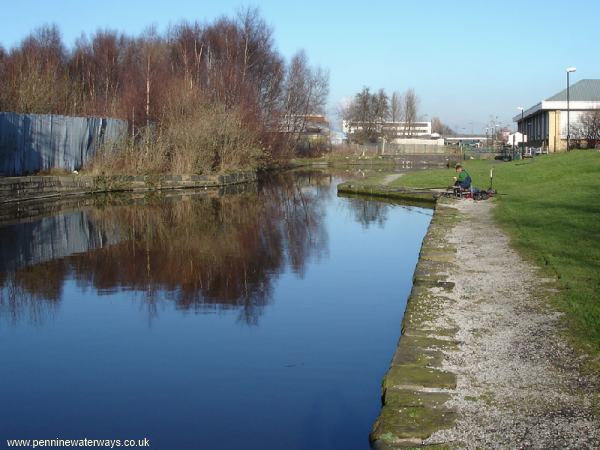
Where the canal narrows, a swing bridge once carried the 1849 railway from Runcorn Gap into the original St Helens Station.
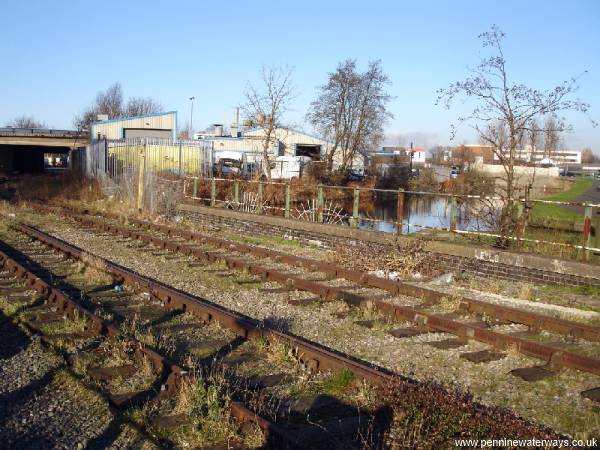
A short distance ahead is the crossing of the present railway from St Helens Junction. This was also originally a swing bridge.
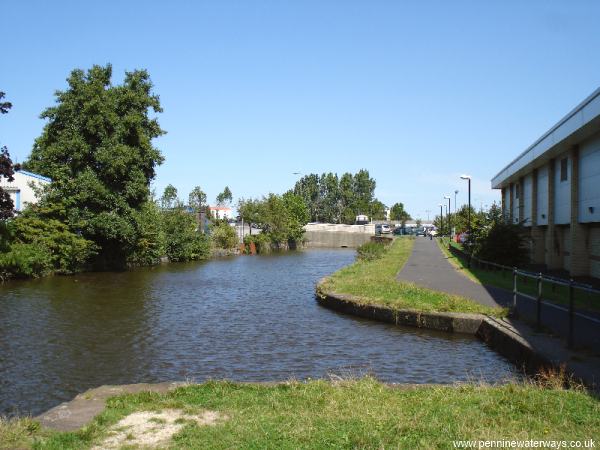
The short stub on the right was originally the entrance to a loading arm. In the distance is the crossing of Church Street.